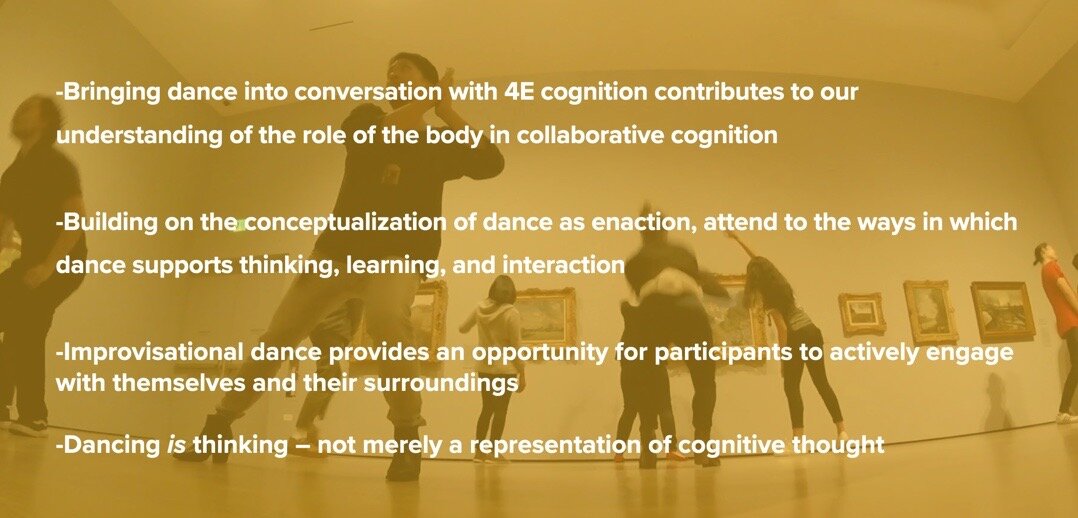Improvisational Dance as Enactive Cognition
We demonstrate the ways an improvisational dance workshop provided the opportunity for participants to be autonomous actors, and engage in embodied sense-making through dance – two key parts of the conceptualization of enactive cognition. As part of a Design Based Research study (DBR Collective, 2003) we use Interaction Analysis (Jordan & Henderson, 1995), Diagrammatic Transcripts (Authors, 2020) and in-depth qualitative analysis to present examples of autonomy and agency in dance learning in a contemporary art museum. We describe the interactions of two pairs engaging in a designed dance activity, and the ways their improvisational movements highlight the ways in which dance is a tool for sensemaking.
